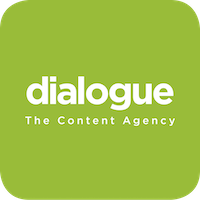Retaining members is cheaper and easier than finding new ones. Better yet, doing it well generates word-of-mouth, brings your brand to new audiences and convinces others to take the next step. But how do you retain those members and turn them into repeat purchasers and brand advocates?
Email marketing
Despite rapid development and change across the marketing industry over the last decade, email remains an effective marketing tool. Typical email strategies include:
- Personalisation – using names and data to acknowledge products purchased, events attended, an upcoming birthday or membership renewal deadline.
- Timing – avoid email fatigue and make them useful by sending at the right time.
- Offer incentives – discounts, freebies, limited edition products, early access to ticket sales…
- Share relevant news – segmented data should reveal what your members want to hear from you and relevant news helps build authority.
- Design to fit your brand – Dialogue has a blog about email design here.
- Request feedback – this will make your members feel valued.
And don’t forget the membership-specific email marketing tactics:
- Send welcome emails to new members.
- Send re-engagement emails to lapsed members.
- Send subscription renewal reminders.
Loyalty schemes
There are many types of loyalty marketing. Membership organisations can benefit from understanding the loyalty schemes that other brands use, including:
- Points – consumers spend money and get points that have monetary value.
- Spend – access to rewards based on how much the member spends.
- Tiered – members get points whenever they buy something. The more points they have, the higher loyalty level they reach.
- Paid – invite members to be part of a club where they pay to get rewards.
- Value-based – reward members based on a shared value or belief.
- Partnered – when brands team up to reward members with something that’s relevant to them.
- Gamification – members play a game and get rewards.
Loyalty Science Lab has researched which loyalty schemes work, such as those that reward cumulative purchases instead of using one-time discounts and those that are invitation-only to focus on quality rather than quantity.
User-generated content (UGC)
UGC has many benefits – the content is free, it’s authentic and it helps build a community. To plan a UGC marketing strategy, you should:
- Define a goal and objective.
- Understand your audience and what types of UGC might work for them.
- Discover sources of UGC and its types.
- Agree campaign duration and how you will measure success.
To execute a UGC campaign, you need to:
- Collect UGC (you can do a specific call-out for this on social channels).
- Customise and moderate gathered UGC.
- Get content access permission.
- Consider turning UGC into shoppable UGC.
- Distribute the campaign across different marketing channels.
- Monitor and measure results.
Community development
Audiences have moved on from transactional interactions with brands and expect meaningful connections based on shared values. These interactions help to build brand communities which generate word-of-mouth custom and build loyalty.
Using online tools such as forums or apps allows businesses to create a branded space for consumers. Championing the most engaged fans and allowing them to share their experiences helps drive word-of-mouth and build the community.
While social media is a natural destination for brands seeking to build loyalty, a report of ours found that online communities are especially significant for younger audiences and that, after obvious channels to build loyalty (website and email), 32.9% of those polled would also seek print or digital magazines post-purchase.
At the heart of these approaches is the need to clearly articulate brand purpose, mission, vision and values to attract and engage the consumer. You can find out more in Dialogue’s Brand Communities Report.
Dialogue Content Marketing is a full-service content marketing agency with a passion for connecting brands with consumers and nurturing brand communities by creating engaging visual and written content across all channels. Contact us to find out more!










Leave A Comment